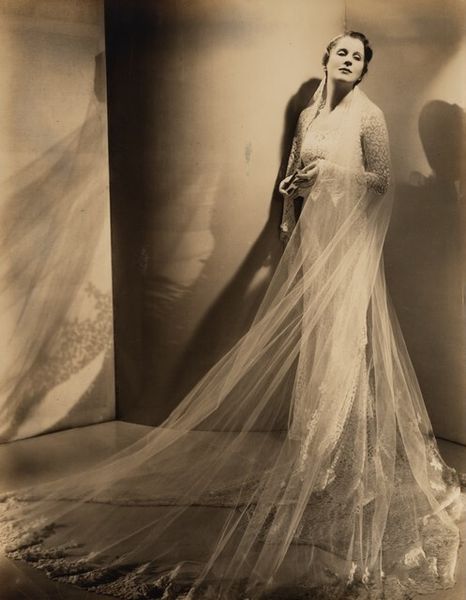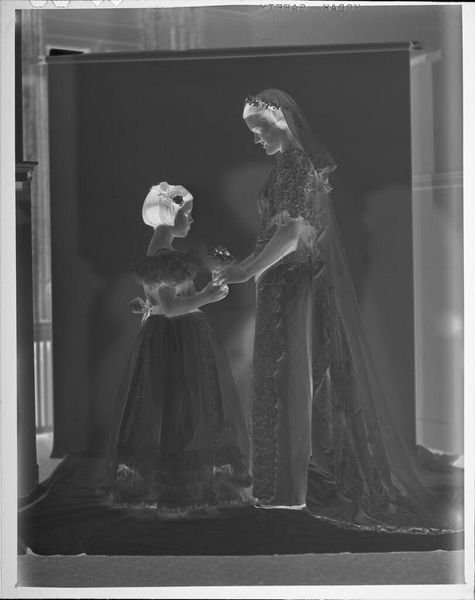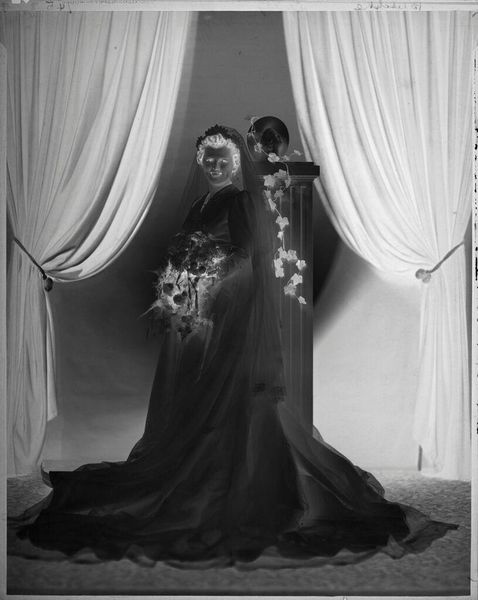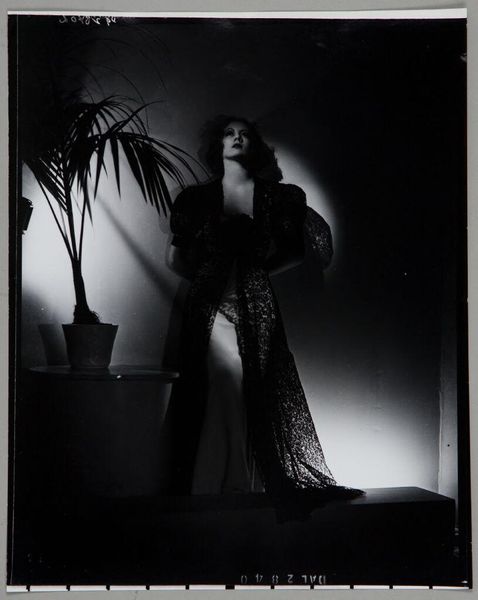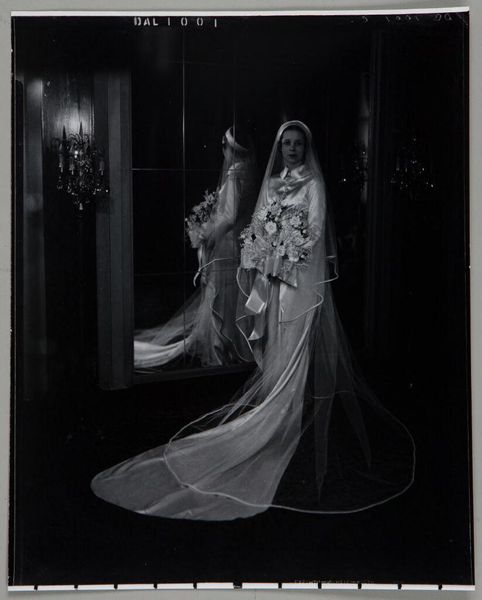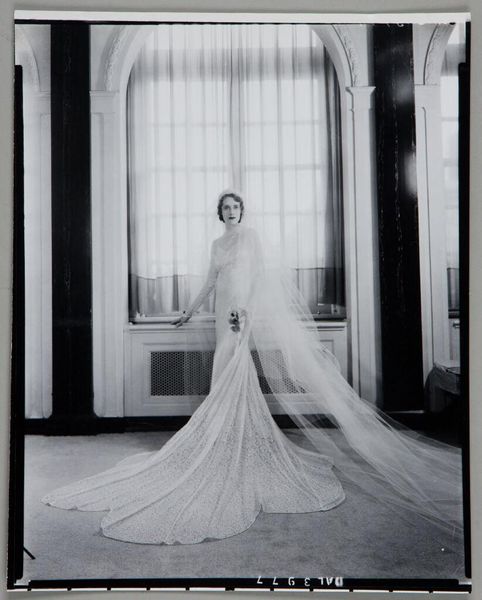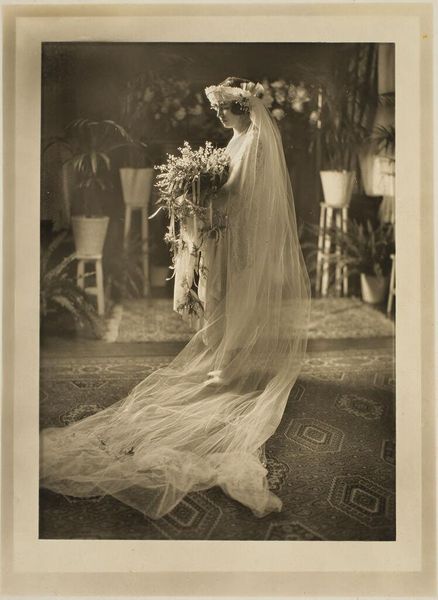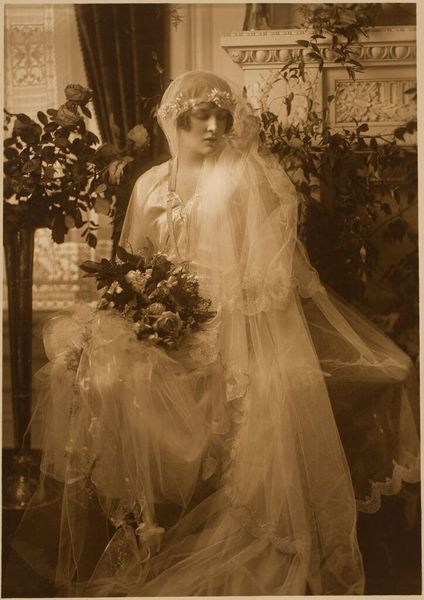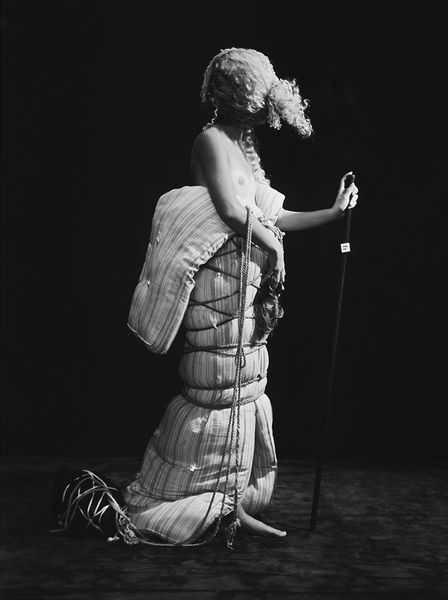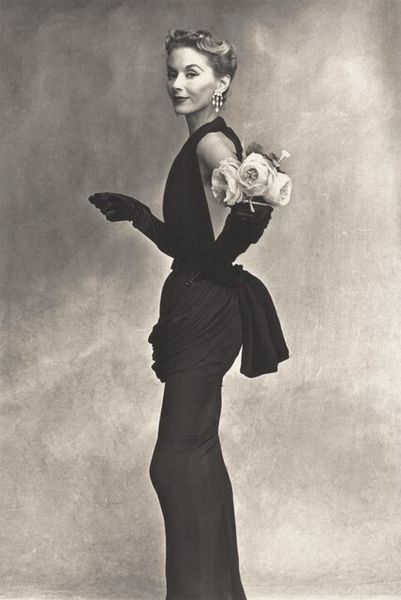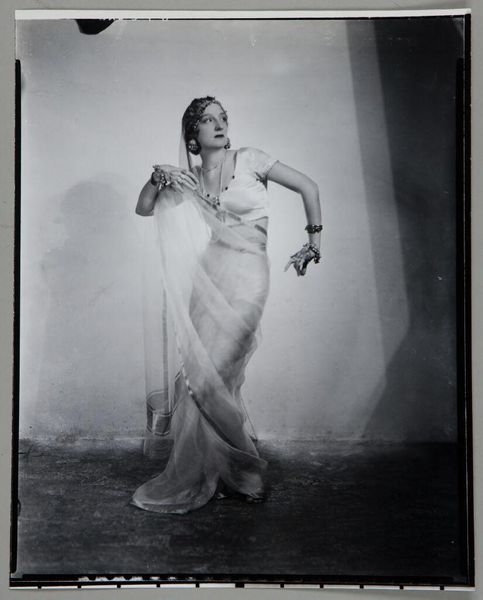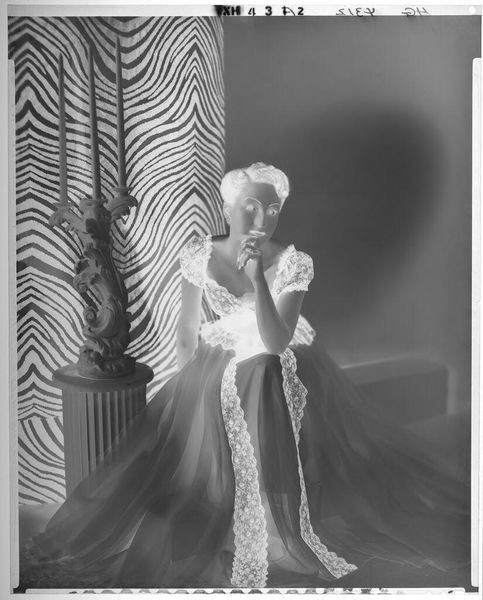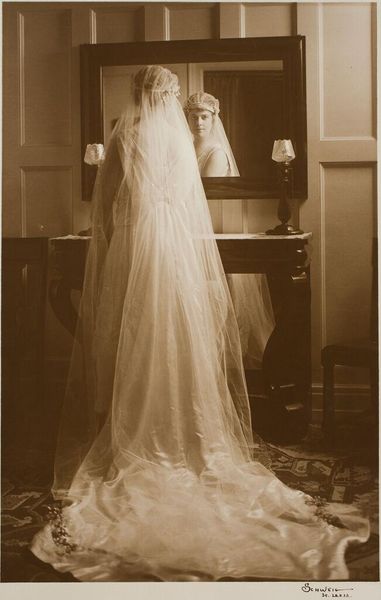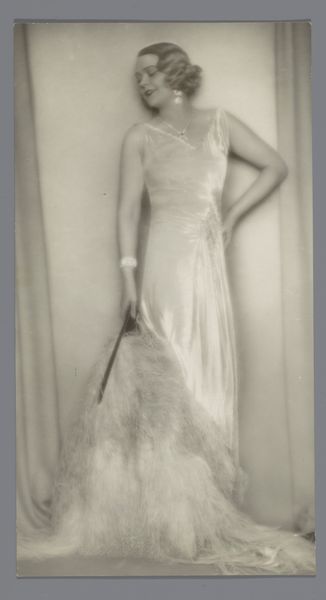
photography
#
portrait
#
art-deco
#
black and white format
#
photography
#
black and white
#
monochrome
#
surrealism
#
monochrome
Copyright: Public domain US
Editor: This is Valentine Hugo’s photograph, "Costume Représentant Parties Du Monde, Bal Louis XIV," from 1923. It’s quite striking! The figures with their elaborate crowns and the veiled fabric create a rather theatrical and unsettling image. What do you see in this piece? Curator: I see a symbolic representation of the self and its relationship to the world, refracted through the lens of history and theatricality. Consider those multiple crowned heads. Don't they evoke a sense of fractured identity, perhaps suggesting the multiple roles a woman of that era was expected to perform? Editor: That’s an interesting point about the fractured identity. The other heads seem mask-like. Curator: Exactly! They are masks, representations, perhaps alluding to the constructed nature of identity itself. The "Bal Louis XIV" reference pulls in layers of historical artifice and courtly performance. Hugo might be exploring how these past symbols continue to shape our understanding of gender and power. Notice the monochrome palette; does it distance the viewer, placing the scene in the realm of memory? Editor: Yes, it definitely gives it a timeless, almost dreamlike quality. I initially saw it as just a striking surrealist image, but the layers of symbolism are fascinating. Curator: And where do you think this photograph sits in Hugo's oeuvre and within the wider sphere of the Surrealists? Does the imagery connect with dream logic? What lasting images resonate across Hugo’s body of work? Editor: I’ll definitely have to delve deeper into Hugo's work. The image lingers in my mind, those faces seem full of secrets. Curator: Indeed. And that's the power of a symbol: its ability to whisper across time and cultures, prompting us to question our own place in the grand narrative.
Comments
No comments
Be the first to comment and join the conversation on the ultimate creative platform.
